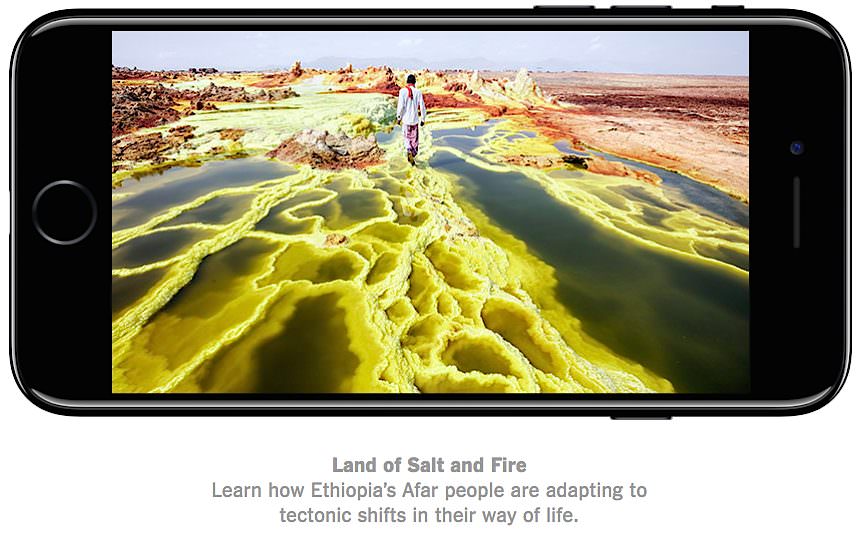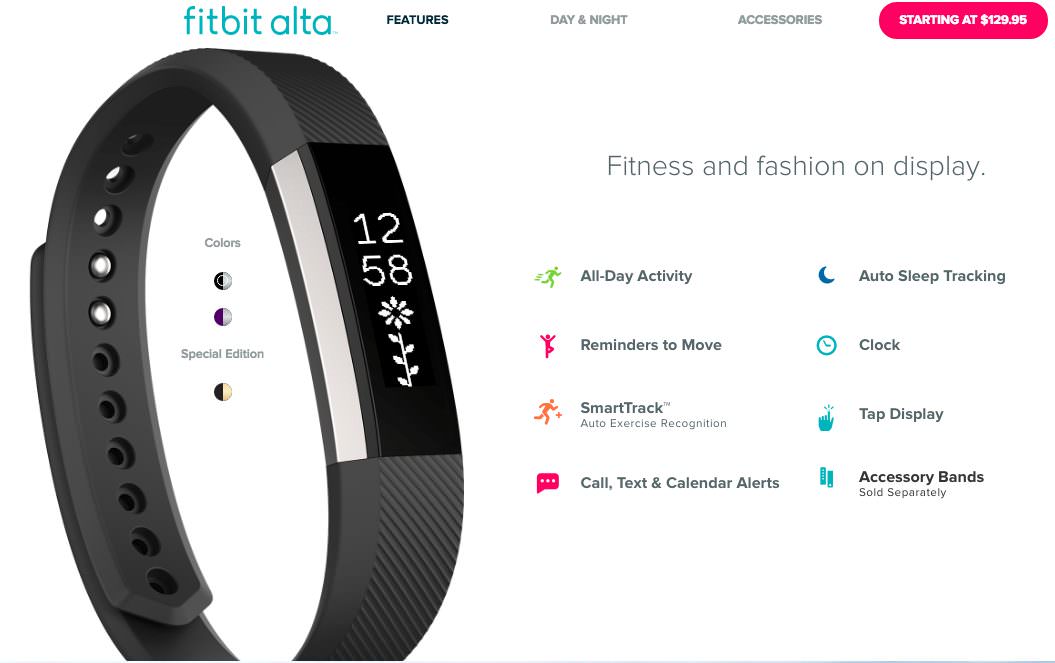“Every once in a while, a new technology, an old problem and a big idea turn into an innovation.” – Dean Kamen
The thing with innovations is that you can’t predict if or when they become mainstream. The television was invented in the 1920s but it took almost 50 years for it to be in almost every home in the country. However, the smartphone took less than a decade to achieve the same feat. Today we can’t even imagine going anywhere without a mobile device in hand.
The same goes for any new innovation in the marketing sector. In a highly connected world, attention spans are pretty limited. Consumers want everything fast. Whatever you have to offer, they want it now.
That is the mantra of every business that hopes to win big in a world where marketers now have access to every demographic from baby boomers to generation Z. To illustrate how serious marketers are in catering to such demands, take a look at these stats:
- 61% of marketers say that growing their online presence and improving SEO is their top priority for inbound marketing (HubSpot)
- 81% of consumers research products online before purchases (Social Media Today)
- One in ten consumers are likely to switch to service providers if they seem more ethical than competing providers (Econsultancy)
These stats highlight a startling fact for product marketers – they won’t get anywhere by trying to market to consumers directly. Consumers are smarter now and thanks to digital technologies, they are also more informed.
Fortunately, marketers can ride the same wave of innovations to reach this audience and in this post, I will discuss how.
1) Artificial Intelligence (AI)
AI (artificial intelligence) advancements like deep learning make it possible for machines to recognize faces and even allow cars to drive themselves. Now, online marketers are using AI to reach and engage consumers in order to sell their products.
Artificial intelligence marketing is a mode of advertising that uses AI advancements like machine learning and deep learning to market to customers. Notable features that are possible with these revolutions are Natural Language Processing (NLP) and image processing.
Here is why AI is considered a valuable tool for marketers today:
- Generating content: A few years ago, Gartner predicted that 20% of business content will be produced by machines in 2018. We are still a long way from AI being intelligent enough to write a critique or comment on a political event, but there are some areas where the technology can create human-sounding content, such as business copy, ads, reports (like Forbes’ earning reports), and automatically generated content . For example, AI program called Wordsmith generated around 1.5 billion pieces of content in 2016. You simply enter the data you have, write a template, and voila – your content is created. AI can create content for marketers in a similar way to how chatbots are programmed: they respond to people via an enormous database that they can access and learn over time through the conversations they have.
- Smarter promotions: Machine learning algorithms can go through vast amounts of data to determine which ads would appeal to particular target audiences. For example, consider Amazon’s AI-powered product recommendation system. It recommends products according to what repeat visitors or customers have bought or searched for on Amazon.com in the past.
- Optimizing for RankBrain: Ever wondered how Google now knows what you are going to look for before you are finished typing in the search bar? You can thank RankBrain, Google’s machine learning technology that analyzes your search queries and processes results according to what you are likely looking for.
There is no question that content and online search habits are an important part of an SEO (Search Engine Optimization) strategy. With this in mind, artificial intelligence is enabling marketers to shed their dependency on traditional modes of advertising like TV and print.
Learn More: How Artificial Intelligence Is Revolutionizing the Digital Marketing Sphere

2) Virtual Reality (VR)
Virtual Reality headsets and software have made a name for themselves in gaming, but lately the technology is also enabling marketers to change how consumers perceive their products.
In general, VR is a computer technology used to create simulated and completely immersive environments. Consider VR headsets like the Oculus Rift and Samsung Gear VR which consumers can use to virtually transport themselves in alternate realities or even another country.
According to Facebook founder and owner of the Oculus Rift, Mark Zuckerberg, “Virtual Reality was once the dream of science fiction. But the Internet was also once a dream, and so were computers and smartphones.”
Here is how this particular innovation is helping businesses improve marketing efforts:
- Demonstrating product attributes: We like to try out products before we buy to ensure that spending our hard-earned money is worth it. Recently, businesses have been using VR to allow consumers to try out products without having to step into a physical store. To illustrate, consider the NYT VR app launched by The New York Times. Viewable through VR headsets like Google Cardboard, print subscribers can use the app to actually experience different news stories from around the world.

- Helping consumers make more informed choices: Let’s say that you have to fix a plumbing issue in your home but you don’t want to pay for plumbing services and you don’t have the skills to do it yourself. Take a page from home improvement company Lowe’s which launched its VR Holoroom How-To tools. The tool guides customers through home improvement projects using the brand’s products and in the process makes them happier about their purchases. Using Lowe’s Holoroom How-To VR tool gave customers a 36% better recall about that task than those who just watched the same How-To video on YouTube.
- More immersive storytelling: Brands use storytelling to keep their products or service fresh and exciting, and to nurture better engagement with customers. With VR technology, you now have the chance to offer consumers more immersive experiences. Patron, a tequila company, used the power of VR to create a 360-degree journey that took viewers through their product’s lifecycle from the fields to the dinner table.
With VR, brand marketers now have a powerful way to engage and reach out to more consumers in a highly personal way.
3 – Augmented Reality (AR)
A little clarification here. Unlike VR, which completely replaces what your eyes can see, Augmented Reality (AR) lets you see virtual objects positioned in the real world. A famous example is the Pokémon GO app which projects Pokémon, the game’s titular character, into the environment around you with a smartphone’s GPS and camera functions.
Here is how AR is helping marketers improve how they reach and engage consumers:
- Practically using products: TV commercials often show products in action to make a case for them. With augmented reality apps, brands are improving that experience. For example, with the AR app from furniture manufacturer Home Depot, customers can determine how the brand’s products will look in their homes.

Learn More: Facebook and Apple Marketers Are Mainstreaming AR
- Increasing viewership: AR is bringing technology outdoors. Lately some channels have been using augmented reality to bring the same experience in real-world settings into the broadcasting room. Consider weather channels that use green screens to make storm broadcasts more interesting. For example, the Max Reality AR software by The Weather Channel integrates 3D imagery into the televised weather news, bringing three dimensional storms, animated humidity graphs, and traffic maps into the viewers’ experience.
4) Internet of Things (IoT)

With the Internet of Things, many devices (such as smartphones, coffee makers, and cars) are now “smart” which gives us the ability to market them in ways that were previously unthinkable. Statistics from IDC show that global IoT spending will experience a 15.6% compound annual growth rate (CAGR) and will reach $1.2 trillion by 2020.
In general, the Internet of Things is a series of interconnected devices or physical objects, people and even animals that are provided with unique identifiers. These identifiers have the ability to transfer data over networks without requiring any intervention. A common example is home surveillance systems which allow homeowners to monitor their houses with their smartphones.
To illustrate how the IoT benefits marketers, here is what you should know:
- Self-marketing: Once connected, products become media and thus are able to market themselves. Consider Fitbit, an activity tracker that allows users to post the status of their runs on social media – a classic example of a connected object advertising its benefits.

- Mutually beneficial marketing: Connecting objects also enables business to take advantage of the connectivity to make mutually beneficial marketing decisions. For example, Spotify and Uber linked their services to allow users to connect their Spotify account with their Uber apps and personalize their ride. The service allows users to play music from their Spotify lists in an Uber ride. It’s basically two apps talking to one another and a car to showcase what they can do together.
Related Content: The Future of SEO: How AI and Machine Learning Will Impact Content
5) Big Data
Before innovations like the Internet of Things and artificial intelligence became household names, Big Data was nothing more than vast amounts of information. No one knew how to harness it. No one knew how to derive meaning from it.
Now, data sets have become a valuable commodity for marketers, giving them insights into consumer behavior and the potential to improve their marketing efforts.
- New Ideas: Big Data is giving marketers new ideas and the chance to execute them in ways that were unfathomable before. For example, consider how big data allows marketers to promote products in real time. To illustrate just how plausible this is, consider the Oreo Super Bowl campaign in 2013.When a blackout halted the game, Oreo started tweeting the phrase “Power out? No problem. You can still dunk in the dark.” The post went viral on Twitter and Facebook which gained a massive social media following and improved brand awareness.
- User Behavior: With the ability to effectively analyze this huge amount of information, Big Data allows you to learn patterns – like customer behavior or current market trends – and market your product or campaign to a highly relevant audience. From a click on a website to a swipe on a mobile application, every action of a user is a sign of interest. And when marketers have tons of data available (especially when combined with machine learning), it helps them reach people who are most likely to convert.
With this fact, it isn’t surprising that the revenue forecast for Big Data is estimated at $92 billion by 2026.
Learn More: Buyer’s Journey 101: What Your Email Data Says About Your Customers
Wrapping Up
With every brand competing for the same target audiences, marketers need all the help they can get. Fortunately, technologies like artificial intelligence, which strives to make the consumer experience so satisfying, offer a solution.
With the innovations in this list, marketers can now create promotions that are more engaging and more immersive. Additionally, innovations in data technology can give marketers actionable key insights for marketing campaigns.



